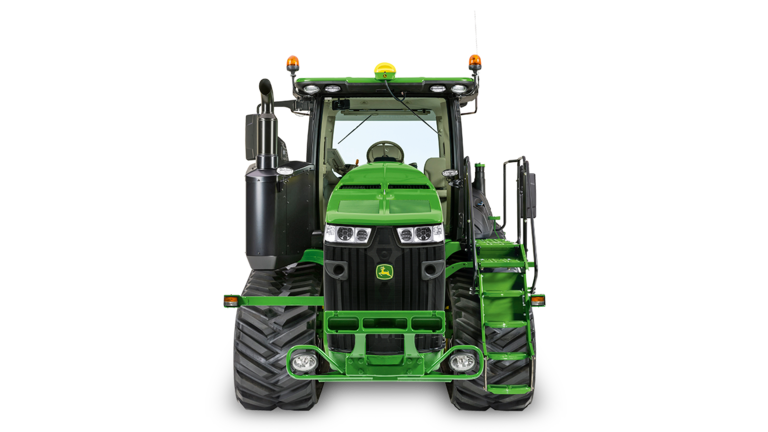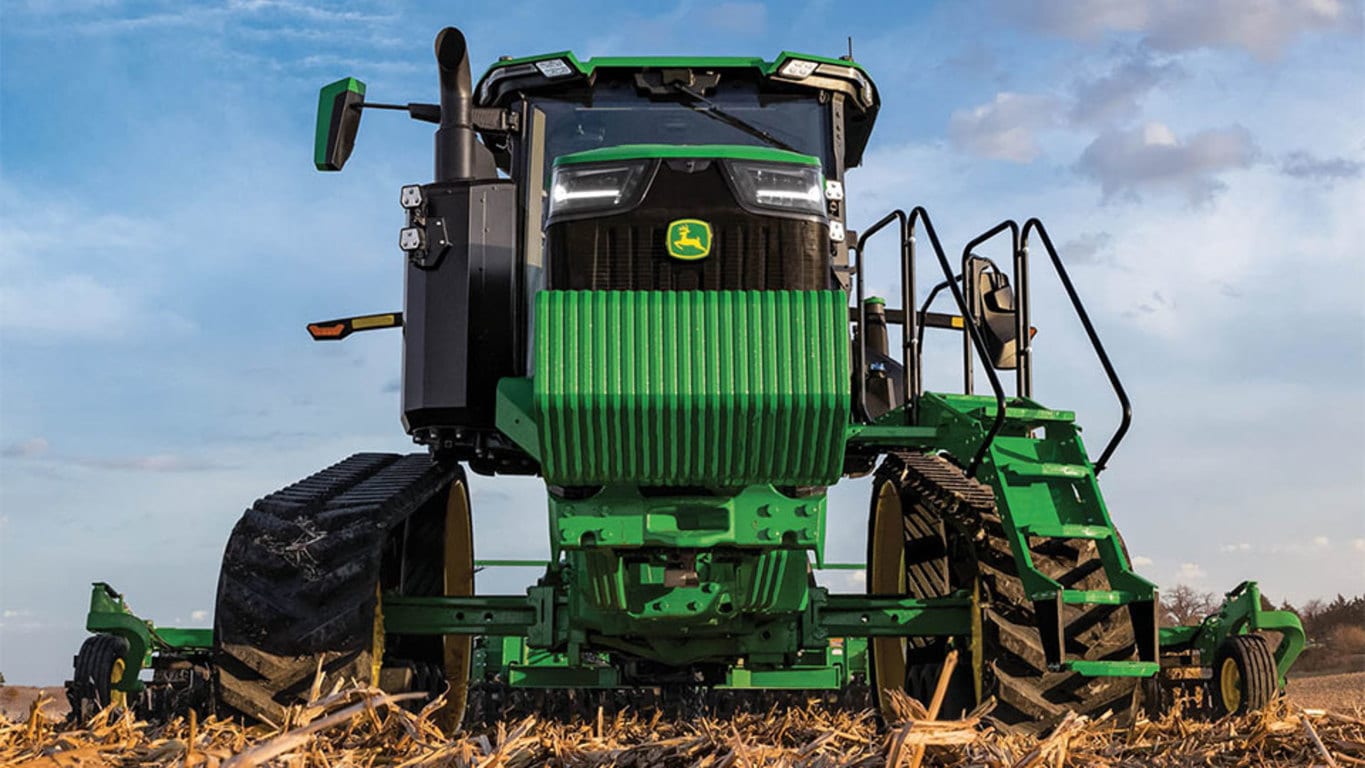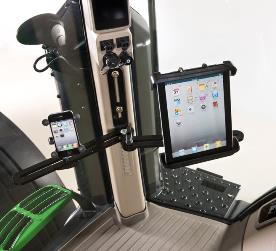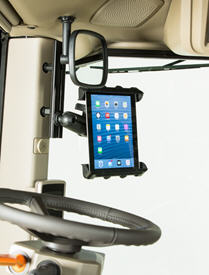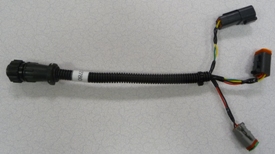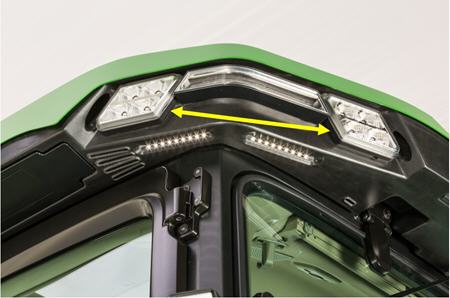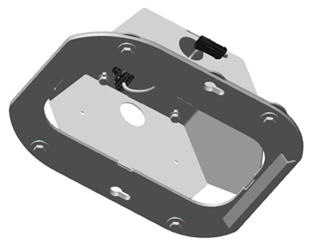 Dual-beam radar emission horns
Dual-beam radar emission horns
 Dual-beam radar (tracks tractor shown)
Dual-beam radar (tracks tractor shown)
 Shield for dual radar beam
Shield for dual radar beam
In today’s agricultural environment, accuracy and precision are more important than ever. For something as basic as ground speed, operators need key information for precise control of various implements and the tractor. To support these needs, tractors can be ordered with a dual-beam radar unit as a factory- or field-installed option.
There are several key features that have changed from previous designs.
First, there are two horns for exit of the radio beam. This dual-beam design assures a powerful and accurate signal that will cut through interference that at times makes single-beam units inaccurate (see 1 in the image above for beam locations). Dual-beam output makes radar less susceptible to hard surface or tall/wavy grass interference.
Accuracy is aided by a heavy-gauge mounting bracket and rubber isolators that reduce chances that vibration can affect the radio signal.
Dual-beam radar has a fast update rate. When the tractor comes to a stop, accelerates, or varies speed, the indicated ground speed on the tractor display will closely match the actual ground speed. This is important for implements that use radar speed to control operation such as planters, seeders, fertilizer applicators, and sprayers.
In addition, the dual-beam radar does not require calibration to assure accuracy. Its self-calibrating ability is sure to save setup time by elimination of a special procedure that was required in the past.
The radar true ground speed sensor activates the following CommandCenter™ display or performance monitor readouts:
- Percent slip
- Hitch slip command (if equipped)
Radar usage improves the accuracy of the following CommandCenter display or performance monitor functions:
- Area covered
- Area/hour
- Distance and ground speed
Dual-beam units are compatible with controller area network (CAN) bus and International Organization for Standardization (ISO) bus electrical systems.

